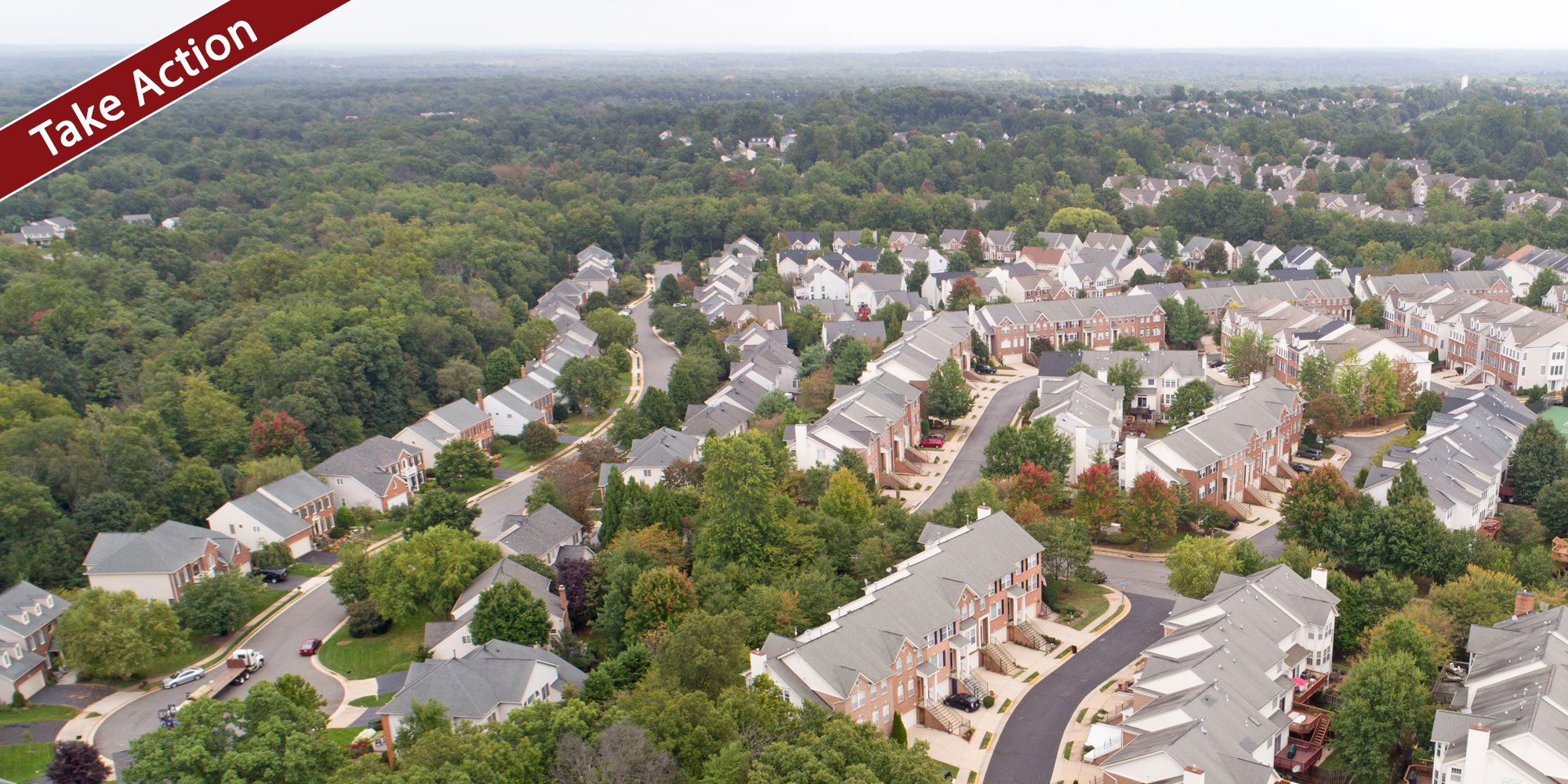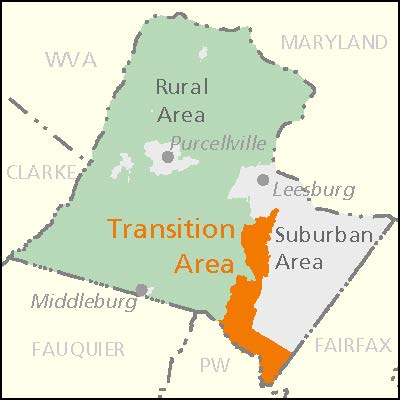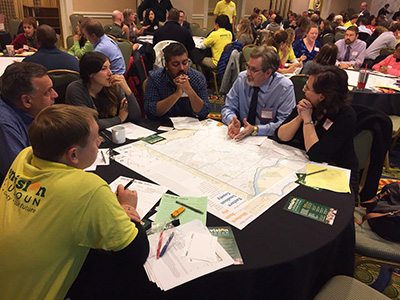 How and where should Loudoun develop? Weigh in at envision-loudoun.org. The current draft Comprehensive Plan allows too much residential development, scattered in too many places. Photo of residential development north of Route. 7.
How and where should Loudoun develop? Weigh in at envision-loudoun.org. The current draft Comprehensive Plan allows too much residential development, scattered in too many places. Photo of residential development north of Route. 7.
The following text was sent out as an email alert on 05/15/18. Please read and take action! If you would like to sign up for PEC alerts, visit pecva.org/signup.
—
Dear Supporter,
Hello again! As you’ve likely been following, Loudoun County is in the midst of making major revisions to its Comprehensive Plan. You may have even seen my recent opinion piece titled “Too Much” in the Loudoun Times-Mirror.
The “Comp Plan” outlines how and where the county intends to develop and how it plans to protect our natural and historic assets. It also describes how the County will meet the basic needs of the community, address housing and economic development.
The plan is being revised through a process called Envision Loudoun. It is a particularly important policy framework for a county like Loudoun, which is consistently one of the fastest growing jurisdictions in the U.S.
Unfortunately, upon reading the released draft, I don’t believe it represents the majority of Loudoun resident’s values and interests expressed in the Envision Loudoun public input phase. Read about some of my initial concerns below.
Weigh In
While it has compelling language and a number of positive goals, the draft plan also falls short in key areas. As I said in the Loudoun Times-Mirror, it allows too much residential development, scattered in too many places, without adequate growth management to control the impact on traffic, taxes, schools and quality of life for existing residents.
The public comment period is now open. It’s important that as many citizens weigh in as possible to help determine what’s included in the final document.
There are two ways to provide input:
Through the online portal that will be available at envision-loudoun.org from May 14 through June 1.
Five more in-person open houses to look at materials and maps, talk to staff, and submit comments. You can drop in anytime on:
Wednesday, May 16
6:30 p.m. to 8:30 p.m.
Harper Park Middle School
701 Potomac Station Drive, Leesburg
Monday, May 21
6:30 p.m. to 8:30 p.m.
Eagle Ridge Middle School
42901 Waxpool Road, Ashburn
Monday, May 21 (daytime)
10:00 a.m. to 2:00 p.m.
Loudoun County Government Center, Dulles Room
1 Harrison Street, SE, Leesburg
Tuesday, May 22
6:30 p.m. to 8:30 p.m.
Cascades Senior Center
21060 Whitfield Place, Sterling
Thursday, May 24
6:30 p.m. to 8:30 p.m.
John Champe High School
41535 Sacred Mountain Street, Aldie
A Plan that Real Estate Developers Like

The draft plan allows for more scattered development in the Suburban and Transition Policy Areas. |
There are a lot of details in the 377-page long draft plan, so I can’t go into everything in this email. However, one of my top-line concerns is the clear emphasis on increasing residential development in lots of areas. For instance:
Suburban Area:
The plan allows a higher density of residential units in too many places. And it does so without an integrated transit and school siting and land acquisition plan. It also has no growth management or phasing, which could result in too much development all at once that burdens taxpayers.
It also includes a new “Urban Planning Area” and new “suburban employment and commercial centers,” which would allow for more intense residential development along Rt. 7 and scattered throughout eastern Loudoun.
Transition Area
The plan also allows for greater residential and commercial development in the Transition Area — an important stretch of land between the heavily suburban development in the east, and the rural area to the west that has been planned for moderate development. It was created to protect critical drinking water, heritage and natural assets, in addition to being a visual and spatial transition between the east and west.
With vague language describing a rationale and criteria for the siting of new higher density villages, developers are likely to push for higher density throughout the whole Transition Area.
Rural Area
The draft proposes to convert over 800 acres of land from the Rural Policy Area into the Transition Policy Area, which would allow more residential and industrial development there.

Citizens in Loudoun have clearly stated their preferences for less scattered growth. Now the County should adjust the comp plan to ensure it meets their vision. Weigh in on the draft plan >> |
What’s Going On Here?
The density increases are based on the notion that we need more residential growth in order to increase the commercial tax base. This is based on a theory that the commercial tax base will offset the costs that come with residential growth. However, there is no real evidence that enough commercial development would fill in the scattered mixed use locations to make that a reality. This is especially true given the changing office and retail markets, and Loudoun’s lagging office and employment sectors.
In Loudoun, if you build residential, new residents will most certainly come, forcing school redistrictings and additional traffic congestion. And although residents generally approve of growth at the Loudoun Metro stations, they don’t favor scattering growth increases elsewhere.
It’s just not sustainable. Loudoun already has an “approved but unbuilt” pipeline of almost 30,000 housing units and current zoning that would allow ~20,000 additional units (taken from page 33 of the Loudoun Foundations Report). Scattering even more housing just increases traffic congestion and compounds the challenge of providing services to existing County residents.
Another way to think about it
Loudoun County has already made a significant investment in our two new metro stations and is planning for the kind of high-density urban walkable development that most residents want there (this is great to see).
But in order to fully capitalize on this investment and make these locations successful, we need to focus growth within a ½ mile of the metro stations. We’ll make it a lot harder for these areas to reach their potential if we allow high density development beyond a ½ mile, as the draft plan currently does.
Call to Act
Citizens in Loudoun have clearly stated their preferences. Now the County should adjust the comp plan to ensure it meets their vision.
Please take a look at the draft plan, and consider coming out to one of the upcoming public hearings or submitting written comment. Better yet, you can send in comments, AND let your supervisor know what you think of the draft so far.
Your participation in this process is an essential part of active citizenship and will shape Loudoun’s future.
Please shoot me an email if you have any questions.
Best,
Gem Bingol
Loudoun Field Representative
The Piedmont Environmental Council
gbingol@pecva.org

Visit our webpage on Loudoun Growth, Development & Transportation issues to read more articles from PEC field representative, Gem Bingol.
